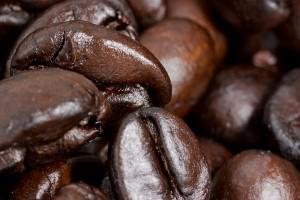 Coffee is a necessity for many of us in the morning. 54 % of the U.S. is reported to drink it daily, which drives the $18B coffee market in the U.S. It wakes us up and keeps us going throughout the day. But is it really sustainable? Especially when it can only be grown in certain regions of the world, “Coffee trees produce their best beans when grown at high altitudes in a tropical climate where there is rich soil. Such conditions are found around the world in locations along the Equatorial zone, between latitudes 25 degrees North and 30 degrees South.” This means many areas around the world that depend on coffee must have it shipped long distances to reach its destination. Transporting these distances add to the consumption of fossil fuels and other natural resources, along with adding to air pollution and greenhouse gases (which in turn leads to climate change that can impact our precious coffee trees). Also consider the massive amounts of water that are used for processing and brewing coffee, all the paper cups used by coffee shops, and the list goes on. It starts seeming our necessary caffeine jolt is not very sustainable or eco-friendly.
Coffee is a necessity for many of us in the morning. 54 % of the U.S. is reported to drink it daily, which drives the $18B coffee market in the U.S. It wakes us up and keeps us going throughout the day. But is it really sustainable? Especially when it can only be grown in certain regions of the world, “Coffee trees produce their best beans when grown at high altitudes in a tropical climate where there is rich soil. Such conditions are found around the world in locations along the Equatorial zone, between latitudes 25 degrees North and 30 degrees South.” This means many areas around the world that depend on coffee must have it shipped long distances to reach its destination. Transporting these distances add to the consumption of fossil fuels and other natural resources, along with adding to air pollution and greenhouse gases (which in turn leads to climate change that can impact our precious coffee trees). Also consider the massive amounts of water that are used for processing and brewing coffee, all the paper cups used by coffee shops, and the list goes on. It starts seeming our necessary caffeine jolt is not very sustainable or eco-friendly.
So what can we do? Here are some tips in how to keep your cup of Joe sustainable:
Certification. Make sure your coffee has been certified as being sustainable. Some smaller coffee companies may not be certified for cost issues, but make sure they are still sustainable by fully reading their packaging or checking out their website. Each certification varies in what they focus on, but each has its importance. Common certifications to look for:
- Bird- Friendly (Smithsonian Migratory Bird Center)
- Rainforest Alliance
- USDA Organic
- Fair Trade
Country of origin. Depending on the country, their growing practices vary. Generally you want coffee that is grown in the shade, since that supports biodiversity because it is not cutting down plants and trees for a coffee plantation. The following countries tend to not use this practice, so avoid their coffee unless they are Bird-Friendly certified : Costa Rica, Brazil, Colombia, and Vietnam.
100 % Arabica. Arabica is the species of coffee that is higher quality. Lower quality coffees are less likely to be shade grown and more likely to have high pesticide usage.
Price. Unfortunately, to have a sustainable coffee you are going to have to pay for it. When paying a higher price it means the environment is not getting trashed and the farmer/ workers are getting proper wages, all factors in sustainability.
[Image source]

